Well, one thing I am not is a rocket scientist. David Wright has a nice review of some of the pieces of debris, though sadly he finished it before several more images (like the engine, above) hit the press.
Here are the images, along with an invitation to continue our discussion:
This looks like one or two (crushed) engines of the four engines in the first stage. For reference.
Gas tanks to pressurize the propellant tanks. For reference see similar Scud tanks.
An o-ring, possibly from the area between the oxidizer and fuel tanks.
What appears to be section of the rocket with the oxidizer tank.
An end view of the forward end of the section containing the oxidizer tank.
Another shot of the section containing the oxidizer tank.
The section containing the oxidizer tank showing four outlets.
What I said before.
I guess we now know the North Koreans put the oxidizer tank forward. I referred to the first bit of debris as the fuel tank, prompting Tal Inbar to suggest the section was for the oxidizer. (I was trying not to take sides; I should have said “a propellant tank.”) We had some debates about this in the past, but it seems pretty clearly the larger tank (for oxidizer) was forward.
Anyway, I’ve decided to spend some considerable time on learning to identify components of rockets, including engines. I am looking for advice! I am starting with Sutton, Rocket Propulsion Elements. What I really need are recommendations to read and, more importantly for the way I learn, historical collections to see. I am already planning a trip to the collections at Udvar Hazy, which are nice. But if you know of others worth visiting, especially on the Best Coast, please let me know.
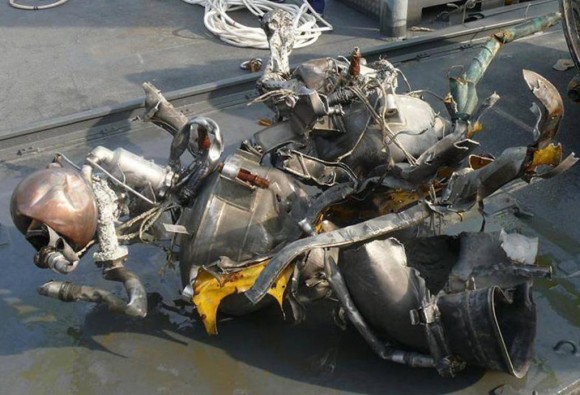
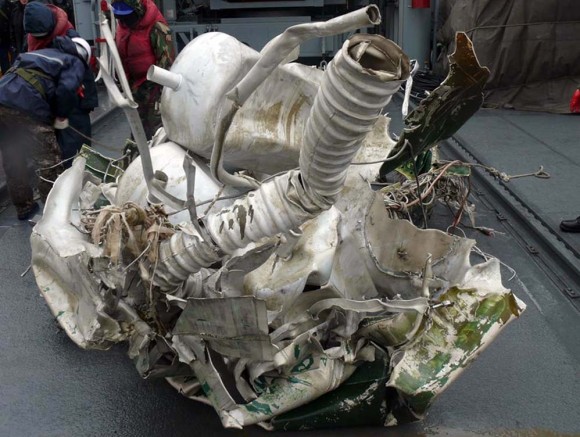
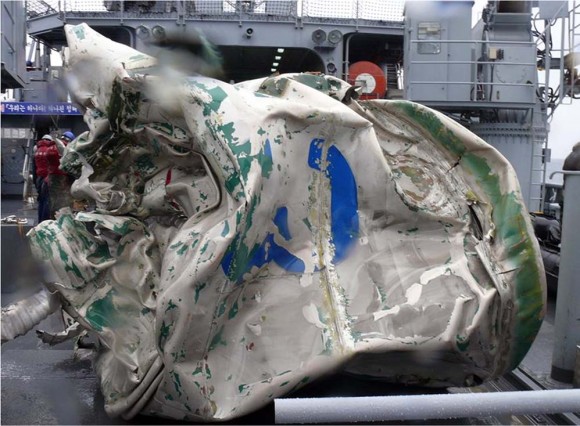
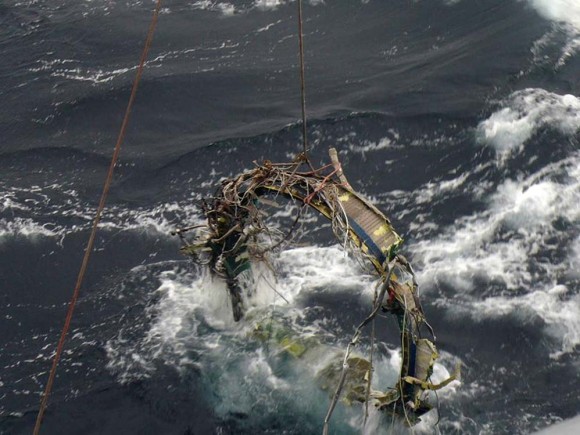

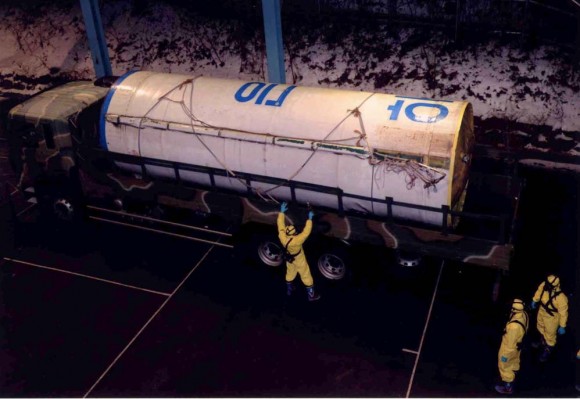
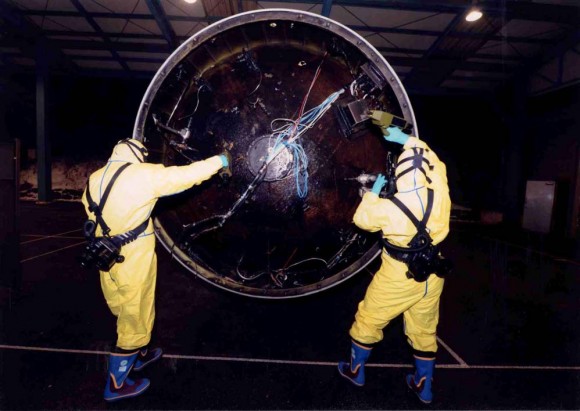

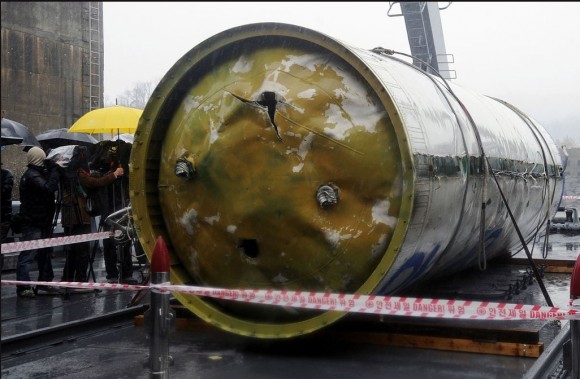


It looks like the Nodong engine from the Unha 2 photo on this guy’s website, near the top of the page on the right:
http://www.b14643.de/Spacerockets_1/Diverse/Nodong/index.htm
Major bits of the turbopump and the turbopump exhaust are missing.
Near the hemisphere thing which I am guessing is the turbopump burner or exhaust collector there is a lot corrosion, maybe from when the nitric acid hit something, or maybe its salt from the sea water that has some how concentrated there due to high heat.
Does anyone know what the black tar like substance is on the top of the “oxidizer” tank photo?
Also, I’m no chemist. Why doesn’t nitric acid eat the aluminum alloy in the oxidizer tank? The stringers and formers look like standard aircraft construction.
Anyway, other than you wonks who want to calculate thrust, range, and specific impulse, and so forth, it seems to me that we have what we have: a Nodong engine based first stage, and confirmation from Wright that is is burning Red Fuming Nitric Acid + Kerosene; i.e. standard Nodong/Scud propellants.
Maybe we will be lucky and get images of the second stage pieces, but they may have burnt due to their higher velocity upon re-entering the atmosphere. The engines look more damaged than the upper tank — maybe they fell that way heavy end first???
With regard to a self destruct package as speculated in the other thread, I doubt North Korea wants to waste weight on that. On older U.S. missiles I believe it was comprised of some type of explosive cord that would rip open the fuel and oxidizer tanks so as to allow the high energy components to burn/explode while in the air (hopefully leaving the remainder of the rocket in little pieces), thereby limiting the damage upon striking the ground and perhaps decreasing the mass to drag area, so that the parts don’t travel further (towards a populated area). One would think that North Korea having such a package on this missile would lower the chances of accidentally hitting Tokyo for example if the missile went off course. The U.S. definitely had this safety feature and it was used more than once to spectacular effect.
“Why doesn’t nitric acid eat the aluminum alloy in the oxidizer tank? The stringers and formers look like standard aircraft construction.”
Aluminum is very reactive with air an almost instantly forms a thin layer of aluminum oxide which protects the metal under it from further oxidation. Aluminum Oxide is a very hard substance, which is why they also use it as the “sand” on sandpaper. The oxides form a passiviation layer at the surface of the metal which is fully oxidized and the acid can’t attack.
The process is basically the same as rust forming on steel tanks, except that the iron oxide is flaky and doesn’t stick very well.
Nitric acid will attack the impurities at welds in aluminum, but for short term storage it’s OK.
Also; if the acid is “inhibited” – addition of 0.5-1.0% (typically 0.6%) HF to the HNO3 and N2O4 – then the aluminum forms a fluoride layer that resists oxidation. This is the standard western solution from the 50s to nitric acid eating tanks. The 60s solution was to abandon RFNA and move entirely to NTO.
This will be easy to determine by looking for a fluoride layer on any exposed metal on the inside of the oxidizer tank or propellant lines…
@ GWH,
I know you’re right, but the idea of adding HF to prevent it from eating something has to be one of the most counter-intuitive concepts in history!
In terms of reference materials, I’d recommend paying for an L2 membership to nasaspaceflight.com to access the vast archives of semi-public images and documents, and discussions by professionals in the field. It covers a lot of stuff other than NASA.
nasaspaceflight.com
$90 per year for government information we have already paid for with our tax dollars??
No thanks.
I’m a little curious about the two guys in Level C protective gear examining the oxidizer tank. The South Koreans apparently had no problem with letting the press get right next to the thing on the ship, but now that it’s on land they’re worried about residual nitric acid? I can’t decide if this is reasonable precaution or a bit of political theater.
As for the blackening on the front of the tank, I suspect it’s charring and unburned propellants from the second stage. If, as Jeffery suggests, that is the oxidizer tank and it was in front of the fuel tank, then when the second stage ignited it would have been right in the plume. Also, at ignition it makes sense that the second stage engines would not be fully spun up and so there would be residue of unburned propellants until it warmed up and everything started working.
Note well: Working on half-understood rocketry from about a million years ago: the first stage should be well out of the second stage’s plume by the time ignition kicks in. After the charges blow to push it back, you’ve got a good 5 seconds or so from complete separation until ignition, and the first stage has a more-or-less-concave surface (relative to the outside edge) hitting supersonic airflows – it drops off fast, and never (?) on axis. The rocket should have been barely out of the stratosphere by the time separation occurs (knowing nothing about the actual specs, because I’m lazy), so that’s a pretty solid punch of atmosphere hitting it.
The scorching will be from that initial flaming fist of an angry atmosphere. Looks like the coating on the main surface burned when it hit – see how there’s an unburnt bit at the top that isn’t matched by the rest of the circle? That’d be a just-off-centre surface hitting the friction (it would have spun down from our angle, with the top edge protecting that little section, while the bottom edge would have pushed the airflow right into the corner and further increased the downward spin), a quick whoomph of whatever the coating was (note the many unburnt bits and pieces furthest from the main surface – it wasn’t leaked material that ignited, only whatever substance was pre-applied to the convex main surface of the tank) and between spin and deceleration that’s all she wrote.
I’m guessing they’re wearing suits because they’ll be testing the surface in ways that’ll release particles and possibly gas.
And for what it’s worth, the damage to the other (“yellow”) end is exactly consistent with that spin, assuming the orientation is the same in both “protective gear dude” photos (and, it seems, in the on-deck photos). As the black / front end spun down, the yellow / rear end spun up, and so the rear tank got ripped out in a downwards direction (from our point of view), leading to the directional damage we can see from the piping being torn out. So it would have lost its grip on the rearward tank (probably) in the first few seconds after separation, not during later re-entry or impact.
Which is probably super-obvious to everyone who knows what they’re doing, but still…
🙂
Regarding stage separation, a number of early liquid-propellant ICBMs and ICBM-derived launch vehicles use “fire in the hole” stage separation, where the second-stage engines are ignited while the first stage is still attached to the launch vehicle. The overpressure thus generated in the interstage region guarantees a very forceful stage separation immediately thereafter, and saves the trouble of providing a separate but properly synchronized retrorocket system on the first stage.
Down side, obviously, is a somewhat rougher ride and the potential for damage to both stages. But ICBMs in particular are built tough, and some designers obviously find it a worthwhile trade. As I don’t see any obvious retros on the first-stage debris, it is quite possible that we are seeing charring from stage separation.
Wow – really? That’s awesome! Just thinking about it makes my scrotum shrivel in vicarious terror, but hey, rocket science is insane almost by definition. ‘What we’re going to do, right, is RIDE AN EXPLOSION’. Ok, yeah, count me out.
Still, I’m going with ‘atmospheric whoomph’ for the observed pattern.
🙂
For rocketry, Rocket propulsion elements is a very good book. Other then that, you might want to read up on wikipedia ( gasp ) – liquid engines, solid engines, turbopumps, flowcharts of engines.
By reading up on various launch engines and orbital launchers, you can pick out the various fuels, pre-burner cycles and the positives and negatives of various approaches.
http://en.wikipedia.org/wiki/Comparison_of_orbital_rocket_engines
http://en.wikipedia.org/wiki/Comparison_of_orbital_launch_systems
For the best forum online, you can read Nasaspaceflight.com, where there are quite a few experts on spaceflight. If you make a post there, somewhere in the general section for example, i’m sure you’ll be pointed towards the information you want.
They also have a paid section with lots of breaking information about current launchers/plans/schedules, although this part is not really needed to get a broad overall education in rocketry.
Thanks All. What I am really in the market for are historical collections of objects that I can get a close look at. I am a visual learner.
Have you seen the Strategic Rocket Forces museum in Ukraine? They have some pics on their website you may be interested in.
http://rvsn.com.ua/en/exibitions/missile_engines/
May I recommend Scott Lowther, an aerospace historian and model maker, who has compiled ‘walkarounds” of various things that fly, as well as unearthed really zany retrotech from the archives:
http://www.up-ship.com
Winchell Chung and his Atomic Rocket website is another goldmine of info.
http://www.projectrho.com/public_html/rocket/index.php
Scott or Winchell would likely have excellent suggestions (and why not waste a few hours prowling their sites).
Russiannavyblog’s link is a good reminder that Russia was not the only heir to Soviet Missile technology. And the crew currently running the Ukraine would, as the saying goes, sell tickets to their grandmothers funerals.
Don’t overlook the National Museum of the Air Force at Wright-Patt. The missile exhibit has a range of main and upper stage engines stretching back to the V-2 you can examine up close and personal (ditto with early RVs). An added bonuis is that since it is off to one side, it doesn’t seem to attract a lot of foot traffic so you don’t have to dodge a bunch of half-interested tourists.
w/r, SJS
Any insights on whether the North Koreans incorporated any Iranian technology?
Specifically the 2nd stage?
“When aaayee was young….” I took out of the main library at Imperial College the English (British) translation of the A4/V2 maintenance manual which was fascinating, especially as it had the German original too… I am not sure you can get an inter-library loan but I am pretty sure the copy now lies in the Science Museum library since the two collections were merged (and righhtly so, teach those scientists some history by accident!).
Isn’t technology amazing?
https://unicorn.lib.ic.ac.uk/uhtbin/ckey/224049
General account of the control system of the German A4 rocket
Emery, J. N.
You need this… (he says as the Koreans scramble to photocopy it).
Is it too obvious to mention? Looking at the German analysis of Iran-Pakistan-DPRK rocketry (linked above by Anon2 for this thread) it seems clear that for this family of rockets, they are all drinking from the same spigot, which is somewhere in the former Soviet Union, taking a hint from Cyrillic lettering.
Yes, the Iranians bought DPRK Scuds, back in the days of the Iran-Iraq war, but it looks like the ‘Nodong’ technology has been improved much more in Iran and Pakistan.
I long wondered about claims of deep co-operation between the three beyond cash and carry. Early on we learned that the common Uranium technology came from the Khan Network. Then came the recent & justifiably proud announcement by the Iranians that they had succeeded in fabricating a reactor fuel element. This is a, as I understand it, metallurgical technology, which the DPRK has had at least since the early 90’s.
Where are the signs of deep technical cooperation between these three incompatible theocracies?
There is no such thing as an incompatible theocracy.
Israel has always maintained a backdoor communications channel with Iran and has been happy to sell the Iranians weapons when they felt it was in their best interests. During the peak of the Iran-Iraq war both Israel and the United States sold weapons to Iran, and Iran was happy to buy them at pretty steep prices because public statements aside, each felt that it was in their national interests to do so. In Israel’s case it greased the way for something like 10,000 Iranian Jews to leave Iran, for the United States it was arms for hostages, and for Iran it was access to weapons they needed to break the deadlock of the war. Ideology and theocracy seldom trump political expediency, so long as everyone involved is willing to keep it quiet.
As for the similarity in rocket designs, they are all outgrowths of 1950s Soviet technology and so it makes sense that they would have certain similarities. All of the programs you mentioned, plus the former Iraqi program are direct descendants of a common design. You can only change so much before things stop working. I have to wonder what the folks at OKB Korolyev who designed the original SCUD think of their baby growing up to be a SLV. Someone should ask them.
On a deeper level, gravity doesn’t care if the writing on the outside is in Cyrillic or Korean or Farsi or whatever, it still pulls downward at 9.8 m/s2. Physics is physics, no matter where you go and so it makes sense that nations faced with the same problem would come up with similar solutions. It’s human nature for whoever has the idea first to accuse everyone else of copying them, and espionage and cooperation have certainly played a role in rocketry, but every nation has brilliant people who are likely to come up with similar solutions when faced with a problem.
Cthippo, you miss the point, which is: Public information shows common sources rather than the deep cooperation that our governments want us to believe in.
I think Cthippo’s point is that there isn’t any evidence for ongoing third-party common sources beyond those already known – nor (expanding) is there necessarily any really deep cooperation going on. Starting with the same initial designs, there are only so many realistic ways to push them further up the road. You can afford to spend the resources on parallel development if you’re a big power, but these guys have a perfectly viable path in just upgrading the tech they already have.
There aren’t any more similarities than you’d expect the common sources we already know about or can reasonably suspect, perhaps combined with the occasional exchange program.
I don’t think there’s much evidence to say that Russia has been driving it all this time, if that’s what you were implying.
One of the pictures that I mentioned on
Norbert Brügge website has a caption that says Unha-3, when it is obviously from the Iranian press conference showing off the “Phoenix” engine cluster for the Iranian Simorgh SLV — it has the same blue drapery backdrop and the same flowers arranged around it.
You can see that from an old Geoff Forden article on ACW: http://forden.armscontrolwonk.com/archive/2617/irans-missile-development-trajectory
Other pictures of the Nodong are obviously very similar to the Phoenix cluster individual engines.
The implication, though not confirmed, is that Iran and North Korea use a common engine cluster for both missiles and are thus sharing R&D. I would say this is a highly probable conclusion. It would save money. In fact, if I were in their position, I would have only a single site develop and manufacture the engines and then would sell it to the other.
So who is the “prime contractor” for the engine clusters. Iran clearly sent engineers to observe or participate in the launch of Unha-3. I think they are in effect a joint venture all working together.
I don’t know if this has any implications for missile technology export violations, but I suspect that both countries have numerous other violations so there is no net effect.
Finally, the Cyrillic lettering seems to indicate some Russian connection. I would not at all be surprised if the Russians actually supplied parts or engineering surreptitiously to one or both parties; and having both a strong Iran and a strong North Korea serves their political purpose of increasing their overall geopolitical situation at the expense of the West, and more importantly for the oligarch class — it makes someone in Russia money in selling the arms abroad.
I suspect that finding the Russians have violated UN export controls would be far more interesting, but still of no net effect as the Russians seem to operate with complete impunity to any sanctions.
Try the Space and Missile Heritage Center at Vandenburg AFB in California.
From their website:
“The initial display area is made up of two exhibits, the “Chronology of the Cold War” and the “Evolution of Technology”. The exhibits incorporate a combination of launch complex models, launch consoles, rocket engines, re-entry vehicles, audiovisual and computer displays as well as hands-on interaction where appropriate. The Center will evolve in stages from these initial exhibit areas as restorations of additional facilities are completed.
The Center is located at Space Launch Complex 10, Vandenberg’s only National Historic Landmark and open for regularly scheduled tours through the Public Affairs office at (805) 606-3595.”
Another possibility is the White Sands Missile Range museum at http://www.wsmr-history.org/
The Museum of Flight in Seattle might have something, but WSMR is probably your best bet.
Jeffrey,
The best book to “read” on SCUD technology is UNMOVIC’s compendium. I forget which volume is missiles (but get all of them since they cover all WMD technologies)
I meant to say Volga SA2 technology…
Responding to 2 different parts: If public accounts are to be believed, the DPRK, Pakistan and Iran all manufacture ‘Nodong’ engines. If we accept the German analysis above the Iranians are using NTO oxidizer, while the DPRK is still using RFNA according to comments about the wreckage shown above. A three year lag between Iranian and DPRK satellite success plus a DPRK mission control center that looks more like a James Bond movie set than a working shop; this doesn’t look like one program to me.
Hmmm, does Kim Jong Un have a long haired Persian cat?
And, why are the Russians the first suspect as a proliferation source when there are other potential actors? As I understand it the Russians have shown good faith on at least the controlled re-entry technologies in the missile non proliferation treaty.
Finally, ‘our side’ has made a public show of how difficult it has become for Iran and the DPRK to move goods between them. Is this true or not?
Greg’s comment [“a DPRK mission control center that looks more like a James Bond movie set than a working shop”] is incisively perceptive. From the hi-res images I made on site last April, and the images from the 33-minute TV documentary released by Pyongyang in mid-December, it’s clear to me that the two control centers have been completely re-furnished, with consoles from the General CC being moved to the Launch CC, and the old Launch CC flat-screens being moved — or upgraded with newer mountings — to the General CC. Once you recognize the swap of the monitors — and the addition of a third, central row of monitors — it gets really bizarre to wonder how real either CC is. Detailed report now in prep.
Given the success the SK Navy is having with recovering the parts, have they tried to recover the bits from the previous launches?
A most EXCELLENT question. My information is that the search in April was abandoned after two days because of bad weather, but I can’t be sure my source had access to real information. Also, an explosion near staging would have probably resulted in tank ruptures that would leave nothing buoyant enough to hang around long enough to be spotted. But a new search now seems warrented because the second stage debris would also be there, plus the actual payload, whatever was carried under the shroud.
Wish you all a very happy and prosperous New Year 2013.
Jeff,
If you want to see good collections of space-launch vehicles, go walk around the static displays in Huntsville. (See here for an overhead view: http://goo.gl/maps/3X8p9)
Consider also the indoor display on the mall in DC (Air & Space Main Bldg) before going to Udvar-Hazy. The U/H collection is nice but I don’t recall very many cutaways, bare engines, or anything that you couldn’t get from a good poster. The “space” side of the U/H annex is fairly small.
Lastly, even if you’re visual, take a peek at Podvig’s “Russian Strategic Nuclear Forces”, the ballistic missile section of which comprises possibly the best narration of the history of 20th C. ballistic missile development I’ve ever read. The drawings of each system are excellent and give a good sense of what improvements were made at each step. I used the Podvig text extensively in the ten-or-so years I spent doing ballistic missile work. (I feel like you and Pavel are probably old buddies and you’ve got a signed copy; nonetheless I recommend his text to everyone else so why stop now?)
As it turns out, we are old buddies and, in fact, I do have a signed copy. But I hadn’t thought of it and the suggestion is very welcome. Thank you!